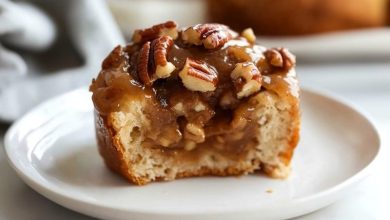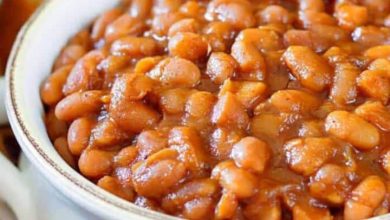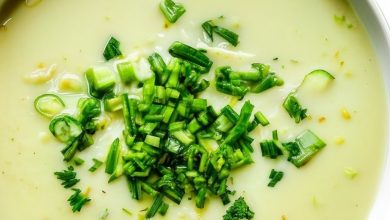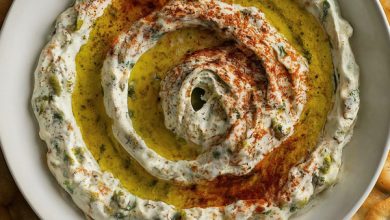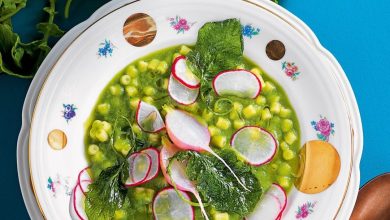Crispy Cajun Fried Catfish with Prudhomme’s Hushpuppies
Introduction
Fried catfish is a quintessential dish that embodies the hearty, soulful spirit of Southern cuisine. This particular recipe pays homage to the legendary Paul Prudhomme’s Louisiana Kitchen, a culinary treasure trove that showcases bold flavors, vibrant spices, and time-honored techniques. When prepared correctly, fried catfish boasts a crispy, golden exterior that gives way to tender, flavorful fish inside. The combination of seasoned flour, cornmeal, and Creole mustard creates a unique crust that enhances the natural sweetness of the catfish, making each bite a harmonious blend of crunch and succulence. This dish is not just about flavor; it’s about capturing a cultural experience rooted in tradition, community, and love for good food. Whether you’re a seasoned home cook or a beginner eager to explore Southern classics, this recipe offers a straightforward yet authentic approach to making restaurant-quality fried catfish in your own kitchen. As featured on Love With Recipes, this dish promises to bring the warmth and richness of Louisiana directly to your dining table, making it perfect for family gatherings, weekend feasts, or a comforting weeknight dinner.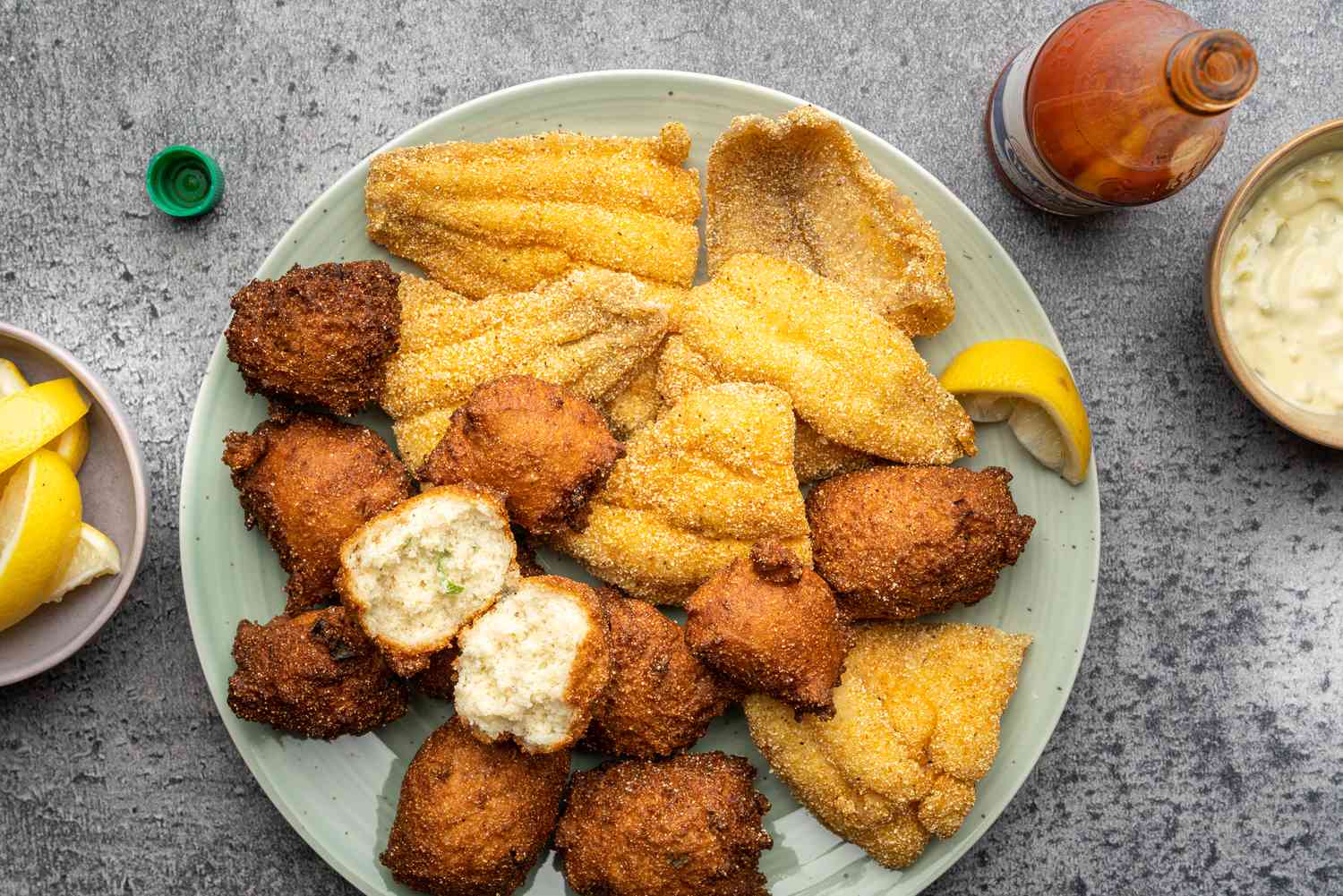
Time
| Total Time | 30 minutes |
|---|---|
| Preparation Time | 10 minutes |
| Cooking Time | 20 minutes |
Needed Equipment
- Deep frying pan or Dutch oven
- Thermometer (preferably probe or infrared for accurate temperature)
- Mixing bowls (at least three for different coatings)
- Whisk or fork (for beating eggs and mustard)
- Measuring spoons and cups
- Tongs or slotted spoon
- Cooling rack or paper towels (for draining excess oil)
- Cutting board and sharp knife (for preparing fish)
- Plate or shallow dish (for dredging)
- Wire rack (optional, for cooling)
- Timer (to keep track of frying time)
Tags
Southern cuisine, Seafood, Fried dishes, Comfort food, Louisiana, Fish recipes, Quick dinner, Family-friendly, Crispy coating, Traditional
Serving Size
One serving generally includes one fillet of fried catfish, approximately 4-6 ounces, depending on the size of the fillet and appetite. This recipe yields about 4-6 servings, making it suitable for a family dinner or small gathering.
Difficulty Level
Intermediate—While the techniques involved are straightforward, achieving the perfect crispy crust requires attention to temperature control and proper dredging methods. Beginners with some frying experience will find this recipe approachable with careful execution.
Allergen Information
| Contains | Sulfur (from fish and eggs), Gluten (from flour and cornmeal), Eggs, Wheat (flour and cornmeal) |
|---|---|
| May Contain | Mustard (Creole mustard), Cross-contamination in oil if fried with other allergens |
Dietary Preference
Contains animal protein; not suitable for vegetarians or vegans. Can be adapted for gluten-free diets by substituting gluten-free flours and cornmeal. Not suitable for pescatarian diets if fish is avoided.
Course
Main course, Seafood
Cuisine
Louisiana / Southern / American
Ingredients
Ingredients in Detail
| Quantity | Ingredient |
|---|---|
| 1 tsp | Salt |
| 1 tsp | Cayenne pepper |
| 1 tsp | Sweet paprika |
| 1 tsp | Garlic granules |
| 1 tsp | Fresh ground black pepper |
| 1 1/2 tsp | Onion powder |
| 1 1/2 tsp | Dried oregano leaves |
| 1 1/2 tsp | Dried thyme leaves |
| 2 1/2 cups | Unbleached flour |
| 1 1/2 cups | Cornmeal |
| 1 cup | Cornflour |
| 2 | Eggs |
| 1/4 cup | Milk |
| 2-3 tbsp | Creole mustard |
| Catfish fillets | As needed, typically 4-6 fillets depending on size |
| Canola oil | For frying, enough to fill pan about 2-3 inches deep |
Instructions
1. Prepare the Seasoning Mix
In a small mixing bowl, combine the salt, cayenne pepper, sweet paprika, garlic granules, black pepper, onion powder, dried oregano, and thyme. Use a whisk or fork to thoroughly blend all spices until evenly distributed. This seasoning blend will serve as the flavor foundation for both the coating and the fish itself. Set aside about one-third of this mixture for the final seasoning touch after frying.
2. Prepare the Catfish Fillets
Begin by rinsing the fish fillets under cold water and patting them dry with paper towels. Place the fillets on a clean cutting board. Using a sharp knife, check for any pin bones and remove if necessary. Slice the fillets into portions if they are large, ensuring each piece is manageable for even cooking.
3. Season the Fish
Sprinkle the remaining seasoning mix evenly over both sides of each fillet. Use your hands or a spoon to gently press the spices into the fish. This step ensures that every bite is infused with robust Louisiana flavors. Let the seasoned fillets sit for at least five minutes, allowing the spices to penetrate the fish and enhance the overall flavor profile.
4. Prepare the Coatings
Flour Coating
In a shallow dish, combine 1.5 teaspoons of the seasoning mix with 1 cup of unbleached flour. Mix thoroughly to distribute the spices evenly throughout the flour. This will be your first dredge for the fish.
Cornmeal Coating
In a separate shallow dish, blend 2 tablespoons of the seasoning mix with the remaining flour, cornmeal, and cornflour. Mix well, ensuring the seasoning is evenly incorporated into the dry ingredients. This blend will give the fried fish its signature crispy crust with a slight corn flavor and texture.
Egg Mixture
In a third bowl, beat the eggs, milk, and Creole mustard together until smooth and well combined. Use a whisk or fork to ensure the mustard is fully incorporated, providing a flavorful coating that helps the crust adhere to the fish.
5. Heating the Oil
Pour enough canola oil into a deep frying pan or Dutch oven to reach a depth of about 2 to 3 inches. Use a thermometer to monitor the temperature precisely. Heat the oil over medium-high heat until it reaches 350°F (175°C). Maintaining this temperature is crucial for achieving a crispy, non-greasy crust.
6. Prepare the Fish for Frying
While the oil heats, sprinkle the remaining seasoning mix evenly over both sides of each fish fillet once more, pressing gently to ensure adhesion. This double seasoning method intensifies flavor and ensures a flavorful crust.
Allow the seasoned fillets to rest for a few minutes to absorb the spices before coating. This step enhances flavor and ensures the spices are well integrated into the coating layers.
7. Dredging Process
First Dredge
Pick up a fillet and dredge it in the flour mixture, pressing gently to coat evenly on all sides. Shake off any excess flour.
Egg Dip
Submerge the floured fillet into the egg mixture, ensuring it is fully coated. This sticky layer helps the subsequent cornmeal crust adhere properly.
Final Coating
Transfer the fillet to the seasoned cornmeal mixture. Gently press the coating onto the fish, ensuring a thorough and even layer. Place the coated fillet onto a tray or plate while you prepare the remaining fillets.
8. Frying the Catfish
Carefully lower the coated fillets into the hot oil using tongs or a slotted spoon. Do not overcrowd the pan; fry in batches if necessary. Overcrowding can cause the temperature to drop, resulting in soggy coating.
Fry the fish for approximately 3-5 minutes per side, flipping gently halfway through, until the crust is deep golden brown and crispy. Use a thermometer to confirm the oil remains at 350°F throughout the process.
Once cooked, carefully lift the fillets from the oil and transfer them onto a wire rack or paper towels to drain excess oil. Repeat the process with remaining fillets, maintaining oil temperature.
9. Serving
Serve the fried catfish immediately while hot and crispy. Complement with classic Louisiana sides such as hushpuppies, coleslaw, or a tangy tartar sauce. For an authentic experience, add lemon wedges for a zesty finish.
Preparation Tips
- Ensure consistent oil temperature: Use a reliable thermometer to avoid sogginess or undercooked fish.
- Use fresh fish fillets: Freshness impacts flavor and texture. If using frozen, thaw thoroughly and pat dry.
- Season generously: Don’t skimp on the spice mix; it’s the backbone of flavor in this dish.
- Double-dredging method: Applying seasoned flour, then egg, then seasoned cornmeal creates a crispy, flavorful crust.
- Maintain oil cleanliness: Strain or replace oil after several batches to prevent flavor transfer and ensure crispiness.
Nutritional Information in Tables
| Nutrient | Per Serving (Approximate) |
|---|---|
| Calories | 934 kcal |
| Total Fat | 22.6 g |
| Saturated Fat | 5.8 g |
| Cholesterol | 226.1 mg |
| Sodium | 2231.1 mg |
| Total Carbohydrates | 126.4 g |
| Dietary Fiber | 9.9 g |
| Sugar | 1.3 g |
| Protein | 55.2 g |
Tips and Tricks
- Temperature control is key: Keeping the oil at 350°F ensures a crispy crust without excess oil absorption.
- Pre-season the fish: Seasoned fillets absorb flavors better when allowed to rest briefly before coating.
- Use a wire rack: Placing fried fish on a wire rack helps maintain crispiness by allowing excess oil to drain away evenly.
- Experiment with spices: Customize the seasoning mix with cayenne, paprika, or herbs to suit your taste preferences.
- Reheat leftovers properly: To preserve crispiness, reheat fried catfish in a hot oven or air fryer rather than the microwave.
Add-ons
- Fresh lemon wedges for squeezing over the fish
- Remoulade or tartar sauce for dipping
- Hot sauce for added spice
- Fresh chopped green onions or parsley for garnish
- Crumbled cooked bacon for extra flavor
Side Dishes
- Louisiana hushpuppies, served warm
- Coleslaw with a tangy dressing
- Sweet potato fries or seasoned potato wedges
- Creole or Cajun-style rice
- Steamed or roasted vegetables like green beans or corn on the cob
Improvements
- Use panko breadcrumbs instead of cornmeal for an even crunch.
- Try different fish varieties like tilapia or haddock if catfish is unavailable.
- Add a splash of beer or sparkling water to the egg mixture for a lighter, airy crust.
- Marinate the fish briefly in buttermilk before seasoning to tenderize and enhance moisture.
- For a healthier version, bake the coated fish at 400°F on a greased wire rack until crispy, about 15-20 minutes.
Save and Store
Fried catfish is best enjoyed immediately for maximum crispiness. However, if you have leftovers, store them in an airtight container in the refrigerator for up to 2 days. Reheat in an oven or air fryer at 375°F for about 5-7 minutes until hot and crispy again. Avoid microwaving as it tends to make the coating soggy.
FAQ
Can I make this recipe gluten-free?
Yes, substitute the unbleached flour, cornmeal, and cornflour with gluten-free alternatives such as rice flour, almond flour, or gluten-free cornmeal blends. Ensure all other ingredients are gluten-free as well.
Is catfish healthy?
While fried catfish provides a good source of protein and omega-3 fatty acids, the frying process adds extra calories and fat. For a healthier option, try baking or grilling the fish with similar seasoning profiles.
Can I use other oils?
Yes, vegetable oil, peanut oil, or sunflower oil are suitable alternatives. Ensure the oil has a high smoke point and is fresh for best results.
How do I prevent the coating from falling off?
Ensure the fillets are thoroughly coated with the seasoned flour and egg mixture, pressing gently to adhere. Also, avoid overcrowding the pan to prevent sticking and tearing.
Conclusion
This Fried Catfish recipe embodies the soulful, flavorful essence of Louisiana cooking. By combining a carefully crafted spice blend with the double-dredging technique, you can achieve a crispy, golden crust that perfectly encloses tender, flaky fish. Whether served with classic sides or your personal favorites, this dish is sure to impress and become a staple in your culinary repertoire. It’s a celebration of tradition, flavor, and the love of hearty, satisfying food. Remember, the key to success lies in controlling the frying temperature, seasoning generously, and serving immediately for the best experience. For more authentic Southern recipes and culinary inspiration, be sure to visit Love With Recipes, your trusted platform for delicious, well-tested dishes.
References
- Paul Prudhomme’s Louisiana Kitchen Recipes
- Louisiana Cooking: The Traditional Recipes and Techniques of Cajun and Creole Cuisine by Chef John Folse

